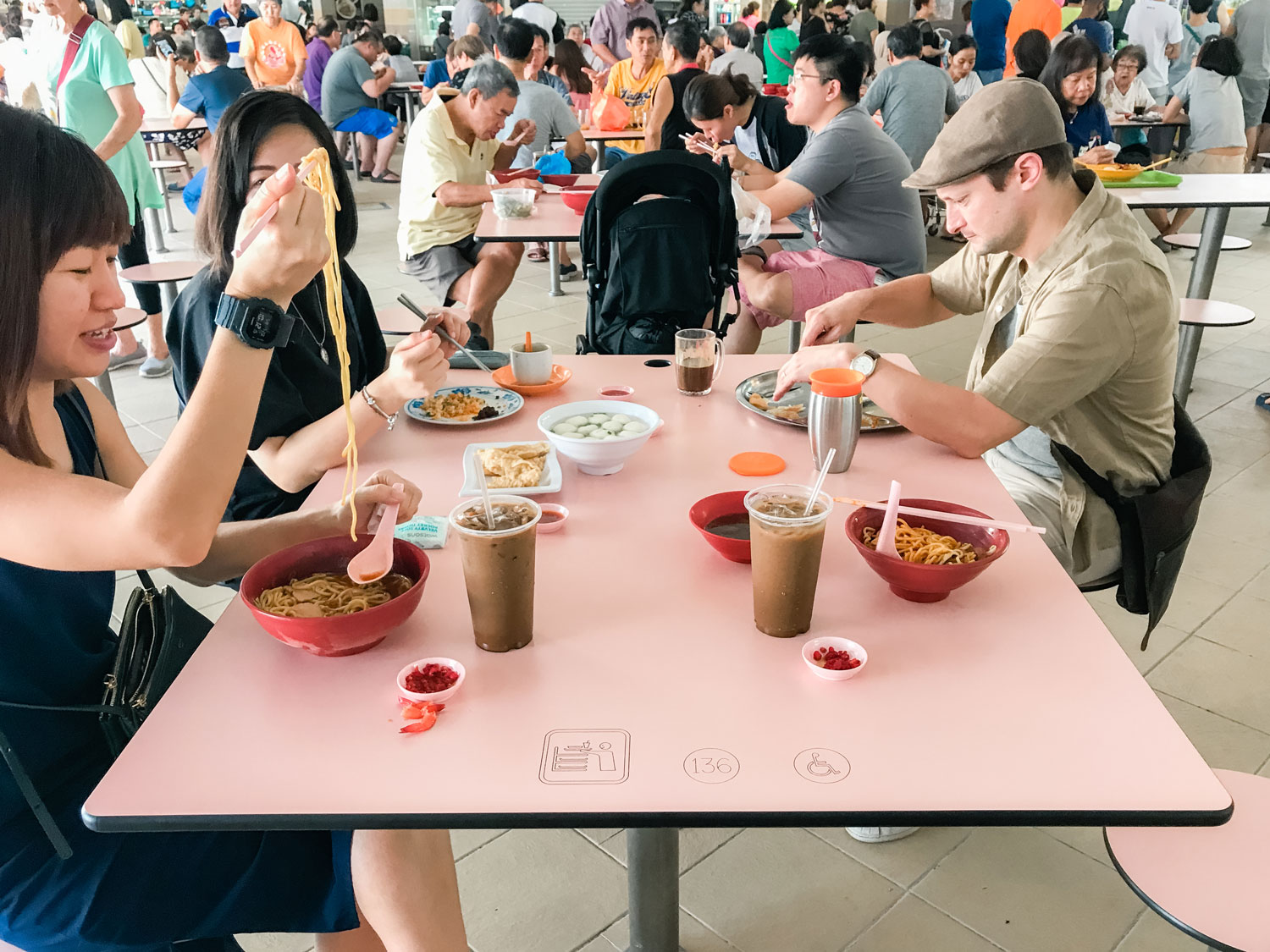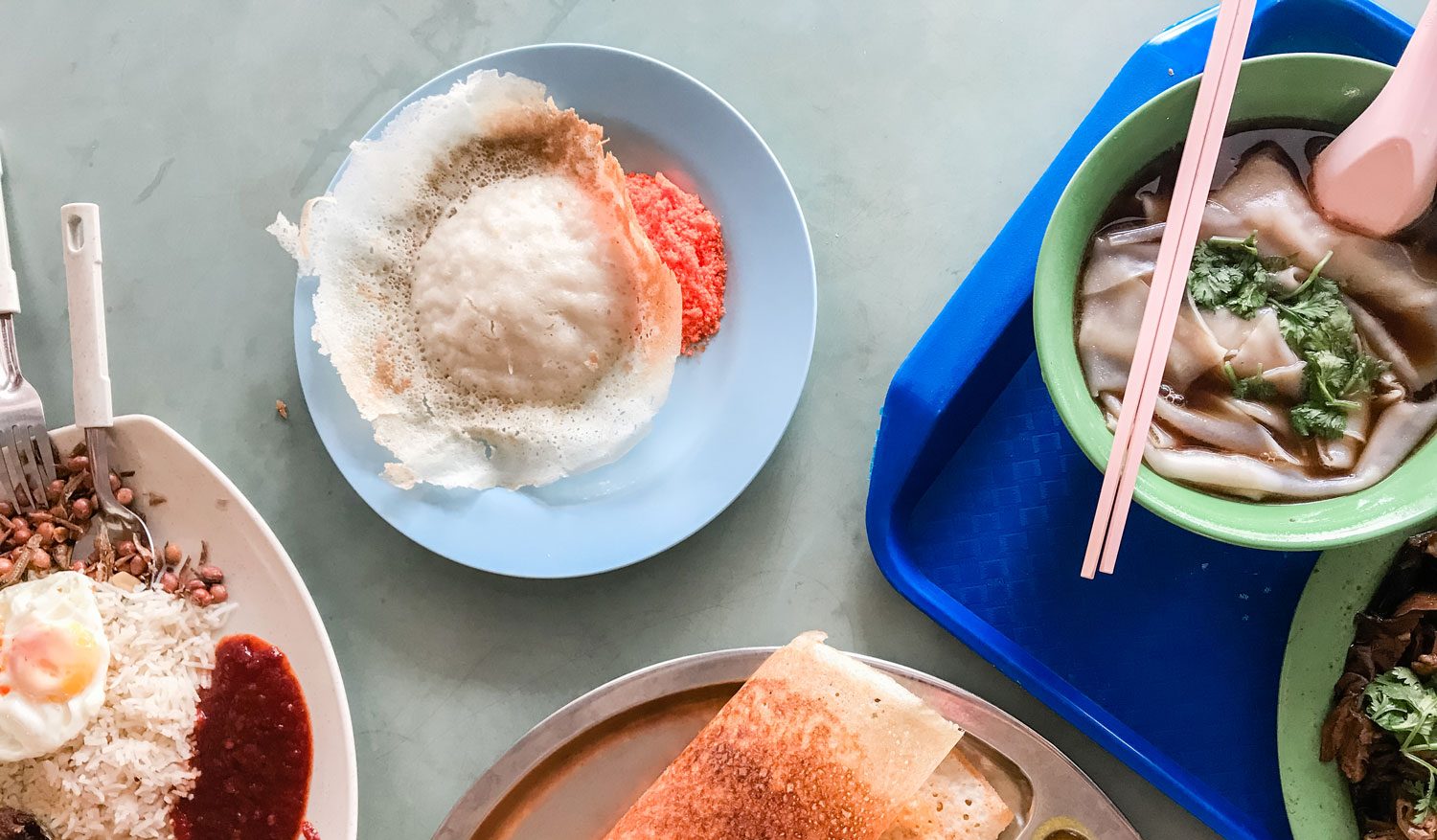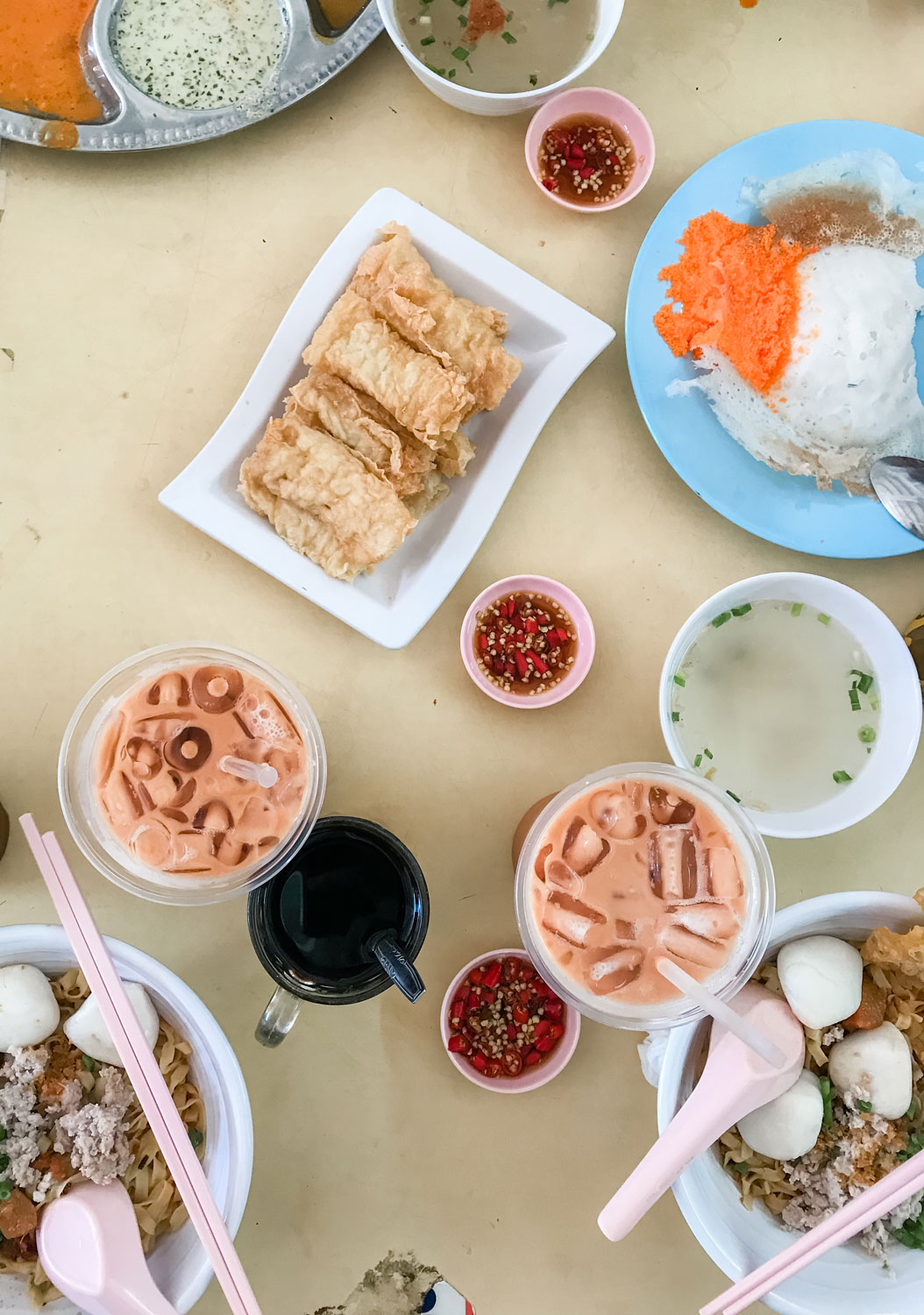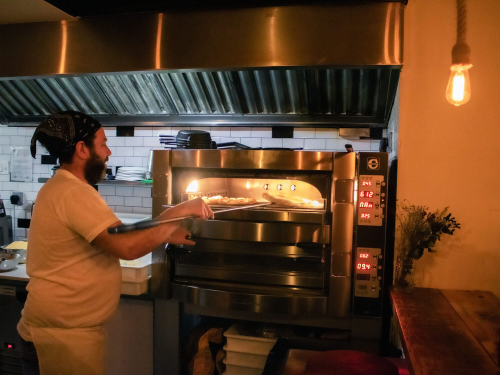
What seems like a lifetime ago, I ate bun bo hue on a sidewalk in Ho Chi Minh City with a couple of strangers, stirring a tumble of fragrant herbs into the spicy broth between slurpy spoonfuls, as hooting motorcycles zipped past.
This is probably my favorite style of communal eating, but there is no street food to be found in Singapore, at least not in the most traditional sense.
Everything that is exciting about muggy evenings and hurdling around low tables on cheap plastic stools on the streets in Asia goes out the window here.
Like how we have meticulously planned every single detail that resulted in the pruned, modern city with first-world infrastructure that we see today, we have also ensured there is no place for the spontaneity of street food on our freshly-paved sidewalks.


Communal dining on affordable local food still exists today—albeit a sanitized version in hawker centres, open-air structures housing food stalls offering a myriad of local dishes, or at kopitiams, a scaled-down version of the hawker centre located at void decks of public housing that is also called coffee shops, but not quite the ones with soy lattes.
Itinerant hawkers were once a common sight in Singapore where food culture has long been influenced by its geographical location and multiracial immigrants who held onto memories of home in an unfamiliar land.
By the 1970s, street food was deemed unsightly and disorganized, posing a threat to public health. Street hawkers were rounded up and authorized only to hawk food in specially-constructed structures.
Hawker centres built in new public housing estates soon became spaces of commensality, designed with round tables to make it easier for people, both strangers and friends, to sit down and eat together.
Among friends and family, food is meant to be bought from different stalls to be shared. The round tables make it easier for everyone to chat and reach for food on the table at the same time.
Unfold the waxed brown paper that is used to wrap food for takeout and it becomes a large makeshift sharing plate where people can rest morsels of food in between bites.
Some hawker centres come with rectangular tables, designed again with communal dining in mind. The tables are fixed side by side to accomodate groups of two, four, eight or more.



Today, communal dining at hawker centres comes with its own set of unspoken rules. When sharing food, it has become second nature for Singaporeans to make sure tableware from Halal food stalls is not contaminated with food from non-Halal stalls.
In crowded hawker centres, it is acceptable to place packs of tissue paper, water bottles or umbrellas on tables and seats to mark that they’ve been taken while one is away queuing for food. It’s funny how everyone has come to respect the reservation of tables using personal items that are on hand and not too valuable.
What gets me in Singapore is when I see foreigners order fried rice or pot stickers at the hawker centre. Fail-safe and familiar choices, they are probably the last things one should order at a hawker centre offering a plenitude of delectable food options.
I suppose sometimes having too many choices is an issue in itself. It is intimidating and complicated, even in an Asian country where English is spoken widely.



Take fishball noodles for instance, you can’t order it like a plate of chicken rice (“One chicken rice, please.”). You would have to tell the hawker the type of noodles you prefer (even two types if you know which ones can be mixed) then decide if you want to have your noodles in a soup or tossed in sauce with soup on the side. If you opt for noodles tossed in sauce, you could also choose how spicy you would like it to be. The permutations are endless.
And if this isn’t hard enough, the peculiarities of dining out at the hawker centre extend to coffee and tea too. It is possible to order drinks in English but it does disrupt the momentum of the hawker taking your order.
For those who have mastered the local drinks-ordering lingo, you can tweak your coffee to your liking in just a few syllables like how “kopi-c peng siew dai” stands for iced coffee with evaporated milk and less sugar.
As I would advise my foreign friends in town, you don’t have to know everything. Just ask a Singaporean and memorize the magic combination of words that translates to coffee the way you like it.
“Singaporeans will tell you our obsession with food pervades every aspect of our lives.”


Singaporeans will tell you our obsession with food pervades every aspect of our lives and the hawker centre, with its ample seating and ceiling fans, has since evolved into a beloved institution in a city that eradicated street food.
When Singaporeans talk about neighborhoods we are unfamiliar with, we often ask “What’s good to eat there?” Don’t be surprised to find yourself stuck in an endless, sometimes heated, discussion on which hawker centres and kopitiams serve up the best renditions of various well-loved local dishes.
Related Articles
-
 Travel & Culture March 16, 2020 | 6 min read Significance of Sustenance: Burlington I grew up in the shadow of the slopes in the Pocono Mountains, but the icy Pennsylvania conditions made skiing decidedly unfun for fall-prone little-ol’ me.
Travel & Culture March 16, 2020 | 6 min read Significance of Sustenance: Burlington I grew up in the shadow of the slopes in the Pocono Mountains, but the icy Pennsylvania conditions made skiing decidedly unfun for fall-prone little-ol’ me. -
 Travel & Culture April 02, 2020 | 8 min read A Brooklyn Pizzeria Fights Through COVID-19 COVID-19 hit the city like a slow-moving hurricane. We knew it was coming, but we were still in shock. Everything was uncertain.
Travel & Culture April 02, 2020 | 8 min read A Brooklyn Pizzeria Fights Through COVID-19 COVID-19 hit the city like a slow-moving hurricane. We knew it was coming, but we were still in shock. Everything was uncertain. -
 Travel & Culture June 23, 2020 | 6 min read Distinctive Process: Maori Hangi Steaming geothermal pools set against a vivid blue sky, in the middle of lush natural surroundings and a day spent soaking up indigenous Maori culture.
Travel & Culture June 23, 2020 | 6 min read Distinctive Process: Maori Hangi Steaming geothermal pools set against a vivid blue sky, in the middle of lush natural surroundings and a day spent soaking up indigenous Maori culture.
